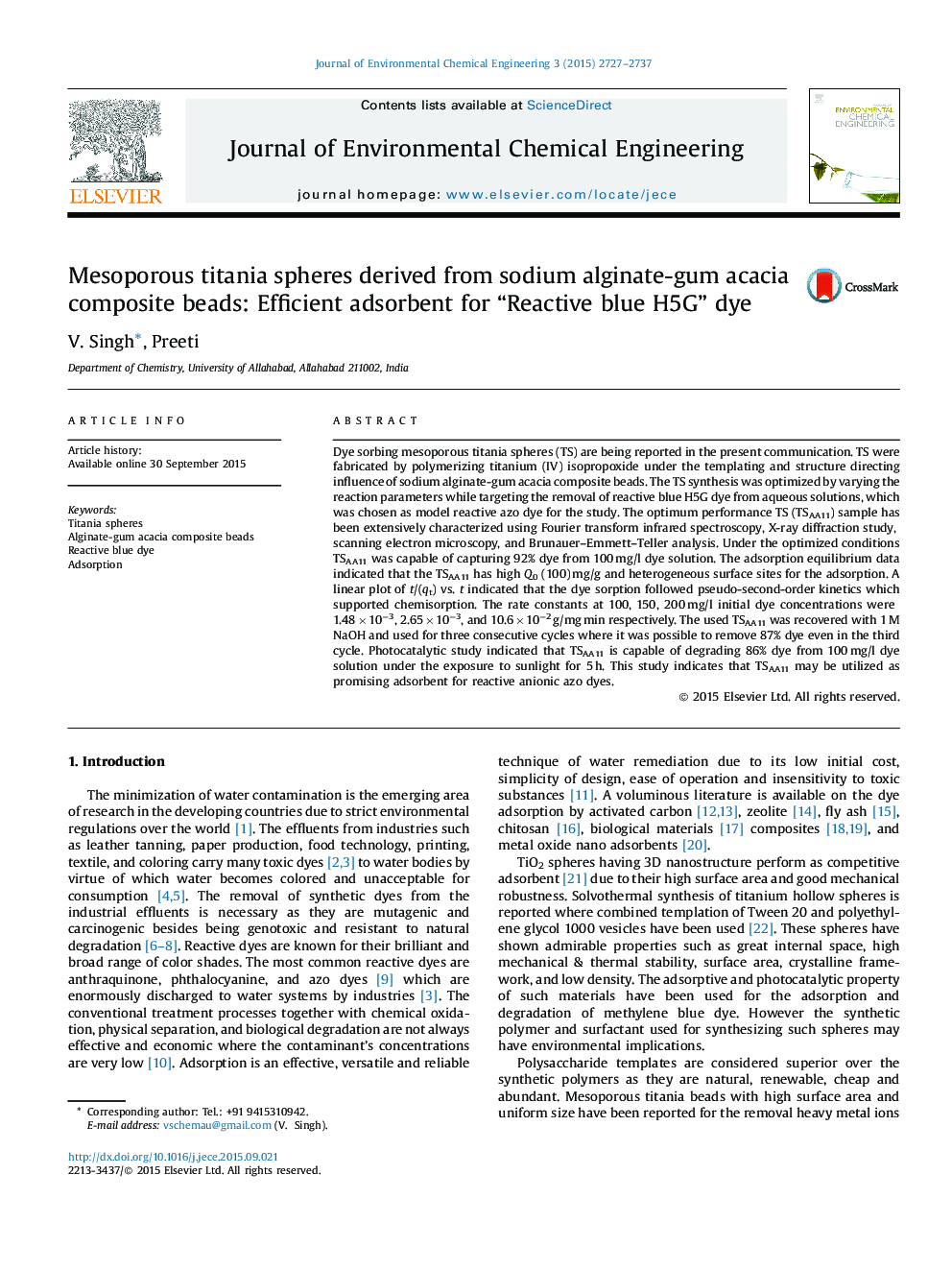| Article ID | Journal | Published Year | Pages | File Type |
|---|---|---|---|---|
| 222078 | Journal of Environmental Chemical Engineering | 2015 | 11 Pages |
•Sodium alginate-gum acacia hybrid beads have been utilized to fabricate mesoporous titania spheres.•The spheres could very efficiently capture “Reactive blue H5G dye” from aqueous solution.•The kinetic study indicated the chemisorption of the dye.•The adsorbent spheres could be easily separated after the adsorption and recycled.•The spheres also exhibited photocatalytic activity in the dye degradation when exposed to sunlight.
Dye sorbing mesoporous titania spheres (TS) are being reported in the present communication. TS were fabricated by polymerizing titanium (IV) isopropoxide under the templating and structure directing influence of sodium alginate-gum acacia composite beads. The TS synthesis was optimized by varying the reaction parameters while targeting the removal of reactive blue H5G dye from aqueous solutions, which was chosen as model reactive azo dye for the study. The optimum performance TS (TSAA11) sample has been extensively characterized using Fourier transform infrared spectroscopy, X-ray diffraction study, scanning electron microscopy, and Brunauer–Emmett–Teller analysis. Under the optimized conditions TSAA11 was capable of capturing 92% dye from 100 mg/l dye solution. The adsorption equilibrium data indicated that the TSAA11 has high Q0 (100) mg/g and heterogeneous surface sites for the adsorption. A linear plot of t/(qt) vs. t indicated that the dye sorption followed pseudo-second-order kinetics which supported chemisorption. The rate constants at 100, 150, 200 mg/l initial dye concentrations were 1.48 × 10−3, 2.65 × 10−3, and 10.6 × 10−2 g/mg min respectively. The used TSAA11 was recovered with 1 M NaOH and used for three consecutive cycles where it was possible to remove 87% dye even in the third cycle. Photocatalytic study indicated that TSAA11 is capable of degrading 86% dye from 100 mg/l dye solution under the exposure to sunlight for 5 h. This study indicates that TSAA11 may be utilized as promising adsorbent for reactive anionic azo dyes.
Graphical abstractFigure optionsDownload full-size imageDownload as PowerPoint slide
